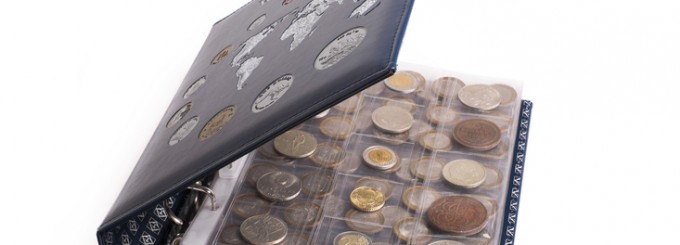Keep Track Of Your Coin Collection With These Simple Tools!

The importance of an updated written record detailing your coin collection cannot be stressed enough. Not only does cataloging your collection grant you the ability to see what you currently own, but it also simplifies your future collecting goals.
Perhaps the biggest advantage of having your coin collection on record is that it will make it easier for you or your heirs to liquidate the assortment of coins. Easier in this sense refers to the fact that by with each item’s value appraised by a professional, there’s less chances for a non-connoisseur to get ripped off when he or she tries to sell the coinage.
In addition, cataloging the collection means there’s going to be fewer complications with the IRS during the sale. While you might find it easier to store your rare coins in a cigar box, the following tools allow you to enjoy all of the aforementioned advantages.
Notebook
In case you’re a beginner or possess a very small collection, then a three ring or a spiral notebook constitute excellent tools for tracking your coins. In fact, you can use a ruler and a pen and create columns where you write down relevant information regarding each piece in your collection. Such information includes, but it’s not limited to, mintmark, country, denomination, grade, quality, purchase date and price.
Checklist
Coin collectors who also prefer to plan for their next purchase while keeping track of what they already own should consider using a checklist for cataloging. The primary advantage of a checklist over the simple notebook is that it’s already organized based on type, year, mint mark and denomination.
The downside of the checklists is that they often don’t include the essential information required by the IRS during a sale. Nevertheless, it’s very easy to add this information to the checklist and hence, avoid paying over the face value of the coinage and the additional taxation to the IRS.
Spreadsheet
To record medium to large coin collections, you can also use a simple spreadsheet program, such as Microsoft Excel for instance. The spreadsheet doesn’t come with the limitations of a checklist and it has numerous columns that allow you to add all information you find relevant about the coinage. In fact, this tool permits you to track details that other collectors are not interested in recording.
A further noteworthy advantage of a spreadsheet is that it makes it easier for the collector to add and delete lines, thus enabling the numismatist to sort his collection and immediately determine the total value of the assortment.
Software
If you have a large collection, then the best tool to keep track of it entails investing in specialized numismatics software. Take note that the internet is home to several such options, from free apps to expensive software and anything in between. According to experienced numismatists, you usually get what you’re paying for, meaning that it’s recommended to go for a paid program that meets the following criteria:
- It’s easy to use
- It has a clear and intuitive interface
- It allows you to catalog your collection as you see fit
- It permits you to download updated pricing
- It includes an automatic re-valuing feature


